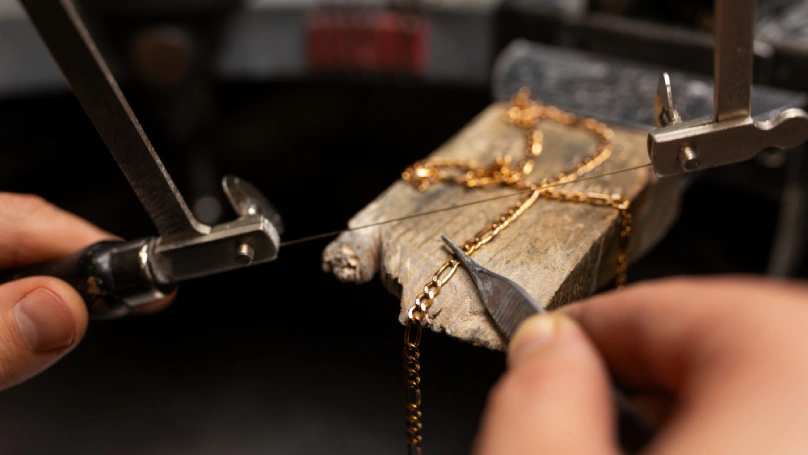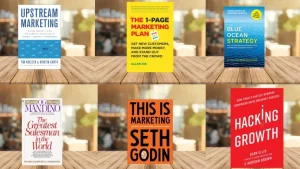Threatened with extinction are the art and trade of jewelry making, glories that carry a rich tradition but have been infused recently with contemporary tastes, thus affording entrepreneurs opportunities to create not merely a few lovely pieces but an enduring enterprise. The U.S. market for luxury fine jewelry is expected to benefit from a valuation of $17.3 billion in 2024, which proves the vitality of this industry. As rewarding as it sounds, a career in jewelry includes being visionary and setting some clear long-range goals. For budding artisans or established jewelers, business planning with strategies and goals will facilitate the transition from passion into a profitable and long-sustained existence.
Understanding the Jewelry Market Landscape
The jewelry market is very traditional and yet dynamic. By 2024, the United States luxury fine jewelry market is expected to reach $17.3 billion in value. Such a good future reflects the promise of strong growth. It is driven by people who want jewelry as a life adornment and not as an inanimate sign of status but an expression of self-identity and convictions. Understanding these changing new values has become very important now. Buyers today want brands that reflect transparency, sustainability, and personalization. With this in mind, jewelers can find themselves ahead in a competitive marketplace.
| Revenue Stream | Description | Contribution to Revenue |
| Product Sales | Direct sales of jewelry pieces, both in-store and online. | Primary source |
| Custom Design Services | Creating personalized pieces tailored to individual client preferences. | Growing segment |
| Repair and Maintenance | Offering services to repair, resize, or refurbish existing jewelry. | 10-15% of revenue |
| Online Sales and E-commerce | Leveraging digital platforms to reach a broader audience beyond local reach. | 29% of U.S. sales |

Setting SMART Long-Term Goals
The establishment of long-term objectives is imperative to the continued growth and success of your jewelry business. The SMART format—Specific, Measurable, Attainable, Relevant, and Time bound turns vague hopes into realistic strategies, truly an important tactic to clarify your aim and, at the same time, to maximize the effectiveness of goal setting for business aimed at success in business.
- Specific Clearly, define your goals so as to provide direction. Be more specific in example use-make it boost ‘online sales of engagement rings by 15%’, instead of the ‘increase sales’ goal. In this way, more sharp end strategies could be prepared.
- Measurable: Make quantifiable measures to your goals so that you could follow progress. Like in “Increased customer retention rate by 10 percent in six months,” it becomes possible to check for developments and make changes in the strategy, if necessary.
- Attainable: Get realistic goals that would challenge but not make your business out of reach. Evaluate your resources and market conditions so that goals such as “launch a new eco-friendly jewelry line within a year” would be possible, conditions allowing.
- Relevant: Want your aims to accord with your business mission and market trends relevant to today’s companies? If sustainability is one of your core values as a company, setting the goal “100% recycled materials sourced by next year” will affirm the brand’s commitment and also appeal to eco-conscious consumers.
- Time-bound: The time aspect generates maintainability. For instance, putting a copious timeline on this goal, “expand into two new regional markets within 18 months,” gives some urgency and helps in terms of planning.

Enhancing Online Presence
At present, having a good online presence is the basis of expansion and visibility for all jewelers. Most digital platforms and tools can be capitalized upon to attract a large audience and to get sales.
Your Website on the Internet is essentially just like the outer shop of your jewelry business. You need to make it pleasing not only to the eyes but also to the clarity of the fonts and pictures in the good-quality product images as well. The website must include a simple and enjoyable user experience.
A search engine optimization (“SEO“) practice such as the placement of relevant keywords and meta meaning at your website efforts towards making your website rank and visible among search engines. Besides, customer reviews, business blogs, and customer service chatbots can trigger more engagement and trust.
Improving Customer Service
First impressions really matter. Train your staff to greet customers warmly as soon as they walk through the doors and set a positive tone for their shopping experience. An inviting atmosphere encourages customers to explore without an uncomfortable caveat.
Offer Personal Service
Understanding individual preferences means catering to a customer with specific recommendations. Talk to people about their style, budget, and the party or event which they plan to wear it. Customizations such as original design or engraving complete the touch.
Demonstrate Product Expertise
Train your team with complete knowledge of your jewelry including the materials, stones, and techniques of craftsmanship. Such knowledge will help staff answer questions confidently and make informed choices for building customer trust.
Put your business into the art of improving the reputation of the jewelry business for its good customer service. Thus, the business will have an increase in customer loyalty and fortune or good future.

Expanding to New Markets
For jewelry firms to enhance their brand identity and sales, going into new markets is of great importance. The starting point for an initial brand entry into the market would be detailed market research to identify promising areas where there is a demand. Local consumer tastes, cultural specifications, and buying behavior, among many others, can help you in producing something suitable. An example of how Indian jewelers have gone into Western markets blends traditional craftsmanship with modern designs, appealing to the Indian diaspora and other lazier international customers.
In addition to making market research, a few tips would guarantee a smooth entry into new markets: creating partnerships with strategizing local retailers, influencers, or designers will help get market insights and create credibility. Having an online presence and e-commerce platforms will increase customer reach from other regions. These few strategies will allow the jewelers to negotiate the challenges imposed by new markets and successfully and sustainably take over as they go in for expansions.
Leveraging Technology
Advanced technologies incorporated in a jewelry enterprise can go a long way in improving operations, customer engagement, and product offerings. It is these tools that an owner should embrace: CAD, 3D printing, AR, and blockchain. All these technologies represent a class of tools that can help enhance and streamline processes with improved customer experience.
With CAD software, jewelers can devise designs with precision, allowing for intricate detailing and customization. A digital approach also virtually eliminates any errors and accelerates the design process. While CAD presents the design, 3D printing provides quick prototyping and production capabilities that allow the customer to visualize and approve the design prior to any actual manufacturing. This in turn increases the efficiency of operations and improves customer satisfaction.

Rebranding and Marketing Strategies
Rebranding and efficient marketing strategies are crucial for jewelry businesses that wish to rejuvenate their image and further their presence in the market. To accomplish a successful rebrand, a business would require more than just a change of logo; it would have to align the values of its brand’s mission and vision with the latest market trends. Such restructuring will create loyal followers in their existing customer base and generate new ones, nurturing an environment for sustained growth.
how to learn marketing and sales fundamentals should be studied, as they form a basis for the execution of marketing strategies. Some free online marketing courses would be beneficial to ensure that they enhance their skills in attracting and retaining customers.
overall
Follow a long-term road to success based on setting goals for greater revenue and customer service, toward expansion, technological integration, and branding strategies. Setting objectives for the company leads it down a path of sustainable growth. Other measures for sustainable growth could include market entry and customer engagement through technology like CAD and AR, which could aid in product enhancement. Repositioning and strong marketing strategies based on good marketing and selling skills can create stronger brand identity and market presence. With all of these, therefore, the jewelry industry may seek to consolidate itself for perpetual success in a competitive market.











